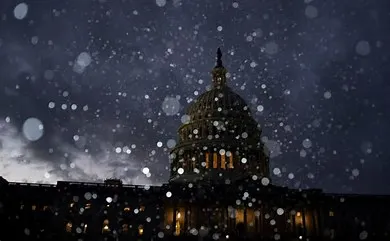Temperatures plunged across parts of the United States on Sunday as a powerful winter storm swept through the country, bringing snow, ice, and winds that created hazardous travel conditions. Experts warn that some areas may experience the “heaviest snowfall in a decade.”
Major roadways in Kansas, Missouri, and Indiana have been blanketed by snow and ice, with the National Guard assisting stranded motorists. The National Weather Service has issued winter storm warnings, with blizzard conditions reported in Kansas and Missouri. Snowfall in some areas, particularly north of Interstate 70, is expected to exceed 8 inches.
Widespread Impact Across the Nation
- Nearly 63 million people are under winter weather advisories, watches, or warnings.
- Amtrak canceled more than 20 rail services on Sunday and plans over 40 cancellations for Monday.
- St. Louis Lambert International Airport reported nearly 200 flight cancellations, according to FlightAware.
State Emergencies Declared
Governors of Missouri, Arkansas, and Virginia declared states of emergency, with similar measures adopted in Kansas, Kentucky, Maryland, West Virginia, and parts of Illinois.
Bone-Chilling Cold Expected
The storm is moving toward the Ohio Valley and Mid-Atlantic regions, with a hard freeze anticipated as far south as Florida. Starting Monday, forecasters predict dangerously cold temperatures across the eastern two-thirds of the US, with wind chills dropping temperatures 7 to 14 degrees Celsius below normal.
Jon Palmer, a meteorologist with the National Weather Service, noted that northeastern states could see prolonged cold spells after an unusually mild start to winter.
Polar Vortex and Climate Studies
The polar vortex’s icy grip has extended southward, affecting parts of the US, Europe, and Asia. Studies link this phenomenon to a warming Arctic, which increases the frequency of polar vortex disruptions.




















